In the United States, a whopping 13.1 million households have either freshwater or saltwater fish, according to the American Pet Products Association’s 2019-2020 National Pet Owners Survey.
Whether you’re an expert in fishkeeping or you’d just like to spruce up your home with a gorgeous, well-kept aquarium, it’s more important now than ever to make sure your aquarium is eco-friendly.
Thankfully, making your fish tank sustainable isn’t as complicated as it might sound. From the type of light used to the kind of filter and aquatic decorations, making your aquarium eco-friendly is entirely possible.
This comprehensive guide will explain all the sustainable choices you can make for your fish, doing your job of creating a sustainable aquarium a cinch.
Ornamental Fish Species
One of the most important — if not the most important — decisions you’ll have to make is whether to keep freshwater or saltwater fish.
When considering sustainability within your tank, freshwater fish are the way to go, and there are a few critical reasons for this. Unfortunately, the majority of saltwater fish in the United States are captured using chemicals like cyanide so they can be caught easier. Cyanide wreaks havoc on coral reefs and their inhabitants, which is a significant ecological concern.
With freshwater fish, about 90% of them are farm-raised, according to Slate, meaning it’s a more sustainable form of aquarium species collection.
Because saltwater tanks use more powerheads and pumps than freshwater, the former also uses more energy — another reason to ditch saltwater tanks in favor of freshwater.
If you decided to purchase tropical fish, you could ensure that you’re using sustainable practices by ensuring the fish are Marine Aquarium Council (MAC)-certified.
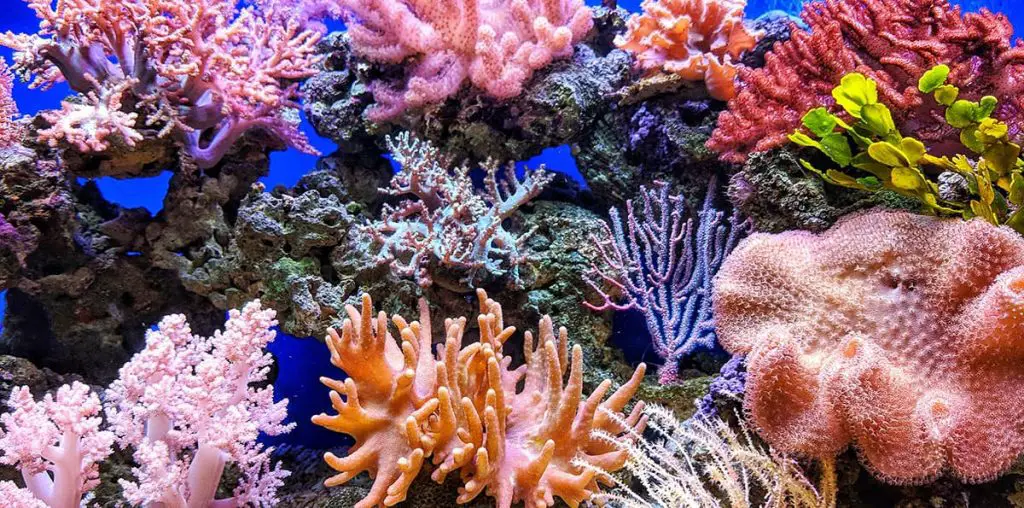
The Marine Aquarium Council is a nonprofit that uses standards to help keep coral reefs preserved. Its conservation efforts are pushed forward with the help of international standards for the care and capture of ornamental aquatic life.
A majority of the time, brightly colored fish are the top choice for those keeping aquatic species. Unfortunately, many of these vibrant fish are raised by producers who use dye to create such a bright color — also referred to as “juicing.” Make sure you’re not supporting these producers and their dyeing techniques by purchasing fishes that have been dyed.
Here are a few species that are commonly dyed so that you can steer clear of them:
- Indian Glassy Fish injected with dye (painted glassfish)
- Black tetra (Fruit Tetras or painted white skirt tetras)
- Blood parrot cichlid (Jelly Beans and Bubblegum Parrots, or painted blood parrots)
- Oscar (such as the Strawberry Oscar)
- Goldfish (Jelly Beans or Ice Pops)
- Corydoras fish
Another concern with ornamental fish collection is overfishing. Divers collect around 30 million ornamental fish every year, and about 16 million of these fish come to buyers in the U.S., according to a report from the U.S. National Marine Fisheries Service. This directly affects reef populations and the very health of coral reefs themselves.
However, that doesn’t mean you absolutely can’t have a saltwater fish. There are actually seven MAC-certified retailers and importers in the U.S. that sell saltwater species that have been sustainably collected. These retailers are in states such as New Jersey, Michigan, Illinois, and Florida.
The Reef Protection International, an organization dedicated to coral reef conservation and raising awareness about marine aquarium trade, has a plethora of information covering critical topics like:
- Threats to coral reefs
- Ways people can get involved and help save coral reefs from destruction
- The impact of aquarium trade on coral reefs
- Threats to the Great Barrier Reef in Australia
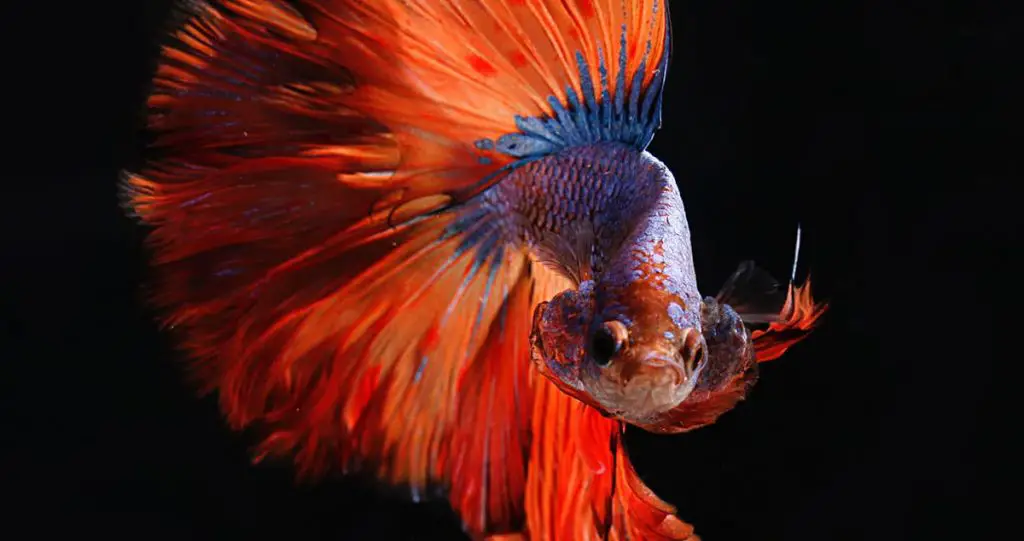
Does Aquarium Size Matter?
Certainly! Not surprisingly, the size of your aquarium has a direct impact on how much energy you’ll use. However, steer clear from fish bowls, even if you’re only keeping a small fish. Fishbowls are not only unhealthy for your aquatic friends, but they’re also challenging to keep up with and maintain.
A small tank (5-10 gallons) would be appropriate if you only have a couple of fish.
Decorations
An aquarium can be a beautiful piece for your home. To complete the aesthetic of an aquarium, however, decorations are a must-have.
Plants
One of the easiest, most common ways to decorate your aquarium is by including aquatic plants. These can be a beautiful form of underwater décor and can be beneficial for your fish.
However, for these aquatic plants to survive, you’ll need more significant lighting. The more lighting you need, the more power you need to keep that light on, the more energy you need to power it.
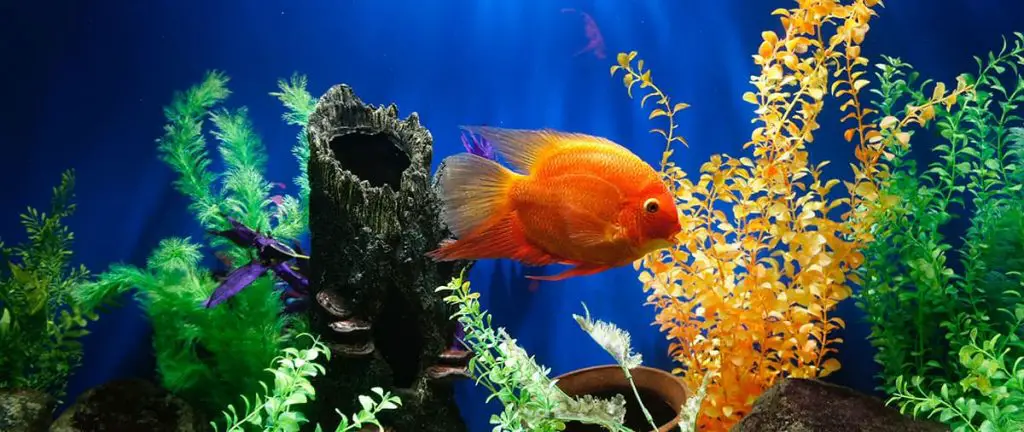
While you could cut energy costs and make your aquarium more eco-friendly by not using real plants, plastic plants can be quite damaging to fish with fragile fins or scales. They also won’t absorb toxins or carbon dioxide, and they won’t provide your aquarium water with oxygen or helpful bacteria.
Therefore, we suggest finding low maintenance plants that require low light conditions to lower the power output your lighting will consume.
Rocks and Coral
Many aquariums make good uses of rocks, a perfectly natural alternative to plastic plants. These also give your fish a place to hide while still being eco-friendly.
Coral is a typical decoration in many types of tanks, although more so with saltwater tanks as it cleans the water. However, lots of coral reefs are destroyed each year, both accidentally and by people foraging for coral. In fact, coral harvesting is illegal in the U.S., but that doesn’t stop some aquarists from doing it.
Instead of buying live coral, there are a few other alternatives to consider, such as:
- Cultivated rock
- Farmed coral grown in tanks
- Artificial reef rock
Biostones — made of volcanic rock and cement — can actually help clean your tank. They’re porous and filter a bit of the water. They can also be infused with healthy bacteria that can clean up some of the aquarium’s waste.
Driftwood
Driftwood does more for your aquarium than just make it look pretty. It also gives your fish another place to hide. Driftwood is sustainable and easy to find. It comes in all shapes and sizes, which is another huge plus.
Regulating Your Aquarium’s Temperature
No matter what species of fish you keep, it’s crucial that you’re also regulating their habitat’s temperature. Some fish require a heater to keep the water at an ideal temperature, while other species need a cooler temperature, meaning you might have to invest in an aquarium chiller.
Aquarium Heaters
If your fish need a heater, you’ll want to make sure the type you choose will work with your tank size. Some heating systems aren’t powerful enough to heat more than 20 gallons, so be sure the heater you want will work.
If you live in a colder climate, make sure your aquarium isn’t near any windows. That way, you’ll lose less heat so your heater won’t have to work as hard. This tip is particularly helpful during winter months, too.
Aquarium Chillers
In a similar vein, aquarium chillers are used to regulate the temperature for species that need cooler temperatures. Like heaters, you’ll need to make sure your chiller is highly rated, environmentally friendly, and appropriate for the size of your aquarium.
Choosing the Right Equipment
Every aquarium — no matter how big or small — needs some equipment. Unfortunately, when looking at the sustainability of a tank, the type of equipment required is often the culprit for waste or energy inefficiency.
Filters
The majority of aquariums need a filter running 24/7 in order to keep the water quality clean and free of toxins that can potentially harm your fish. The filter should be running every hour of every day to keep your species healthy.
Unfortunately, that usually means more energy use. However, that doesn’t have to mean you have to choose between an eco-friendly tank and your fish’s health.
Smaller filters generally use less energy, because the smaller size equates to needing less power.
When purchasing a filter, check to see its rating and the power level. If the filter is made for a larger 40-gallon aquarium, it’s not a good idea to use it for a 5-gallon tank as the filter will be a huge energy sucker.
If you would rather not deal with the energy use that a filter requires, consider a self-sustaining aquarium. These are tank environments that don’t need the constant care of a person to thrive. They’re more eco-friendly since they usually don’t need a filter, but you’ll still have to have lighting and a heater (especially if your fish are tropical species).
Partial water changes can help keep your fish healthy, too.
Lighting
Lighting is vital for the majority of aquariums because it illuminates your aquatic inhabitants while also allowing photosynthetic plants to thrive. Using light-emitting diode (LED) lights can decrease the amount of energy you use by a couple of kilowatt-hours. This type of lighting is more energy-efficient than your traditional tank lighting systems. LED lights are not only better for the planet, but also better for your bank account.
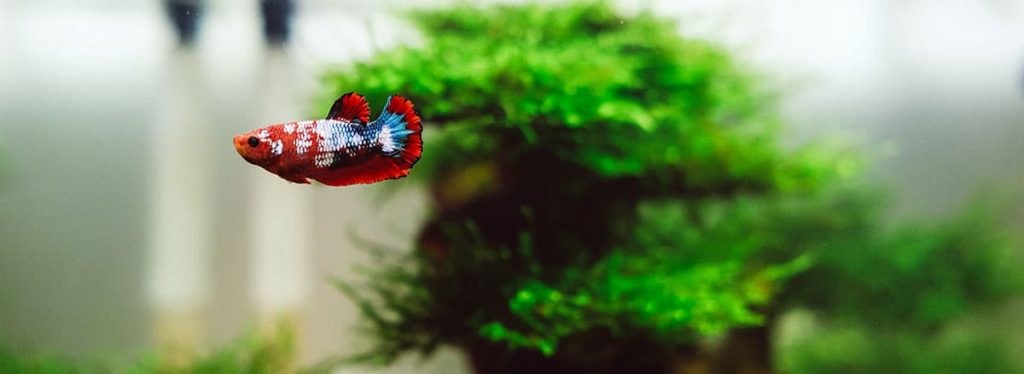
However, make sure your aquatic friends can thrive under LED lighting. Some fish need their own particular type of lighting. For example, incandescent lights — like an incandescent light bulb — can heat the water disproportionally, so that the water closest to the light is hotter in temperature, which can harm your fish.
LED lights don’t produce much heat, making them an ideal lighting source for more than one reason.
Other options for lighting that’ll cut your energy costs include:
- Fluorescent lighting with a wide array of bulbs
- T5 lighting fixtures
- Plasma lamps
Power Strips
Using a power strip can also cut down on energy use, making your aquarium all the more green. In fact, smart power strips — power strips that shut down power when products go into standby mode — can be even better.
For example, although equipment like your filter might be running 24/7, other items like fans or lamps can be automatically shut off. If your aquarium is in your room, plugging in electronic charging cables for a computer or a phone isn’t a problem either.
Caring for Your Equipment
However, it doesn’t matter if you have the most eco-friendly equipment if you choose not to take care of it. Equipment that’s not maintained very well — like a dirty, clogged filter — uses more energy than equipment that’s used and maintained as it should be.
Before Purchasing an Aquarium, Plan Ahead
Although it might sound obvious, make sure you plan ahead before buying a tank. You’ll need to know the species of fish you want to keep, the type of water they need, how much equipment is required, and how big the aquarium should be.
If your aquatic friends outgrow their tank, you’ll have to buy an entirely new aquarium. This hurts both your bank account and the planet as unnecessary consumption isn’t a sustainable practice.
A Few Last-Minute Tips for Environmentally Friendly Aquariums
Once your aquarium is all set up, the quest to be eco-friendly with your tank isn’t over. There are a few more tips and tricks to make sure your aquarium habitat is as sustainable as possible.
- When cleaning out your aquarium or while performing a partial water change, don’t just toss out the dirty water. You can actually reuse it. How? Consider watering your houseplants or garden with cloudy tank water.
- The only exception to reusing old aquarium water for plants is saltwater. This can damage or kill plants, so make sure you only water your garden and houseplants with dirty freshwater.
- It’s no secret that fish don’t live forever. When one of your fish passes away, don’t flush them down the toilet drain or sink. Instead, bury the fish in your backyard or garden. The decomposition can do wonders for plant growth and can improve the overall health of your plants, too.
- Lastly, don’t buy fish if you can’t afford to take care of them. If you don’t have the money or means to take care of them, you’ll also be wasting energy by letting them take up space in your residence.
As a general rule of thumb, only purchase and set up an eco-friendly aquarium if you can afford to invest in this kind of endeavor — otherwise, it’ll be a moot point to ensure your tank is environmentally friendly.
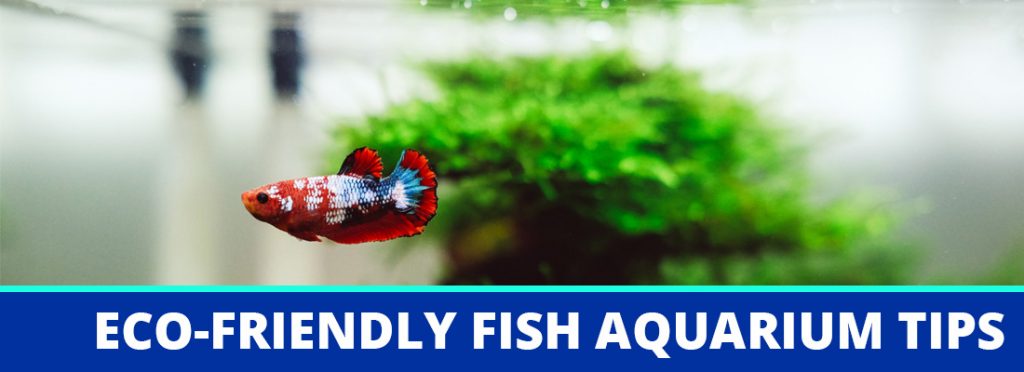
What about filter media? All the sponges and floss seem to be made of polyester and eventually have to be tossed even if you can clean them a few times. Is there an eco-friendly material we could use instead, that won’t impact the water quality? I’m worried naturally fibers might break down too quickly and add to the load on the tank.
Honestly I’ve been using the same filter medium for years. I just rinse well with cold water to not kill the beneficial bacteria. My plants do most of the carbon and waste removal my tanks are healthy and beautiful. Also in the past I have used cotton quilt batting which can .last quite a while and you can bury it in your garden as it is compostable. Just use 100 cotton or cotton wool mixed.
Something I’ve also thought about it the sustainability of fish food. I’m super careful about what I eat but not sure how to go about it in terma of feeding our fish!